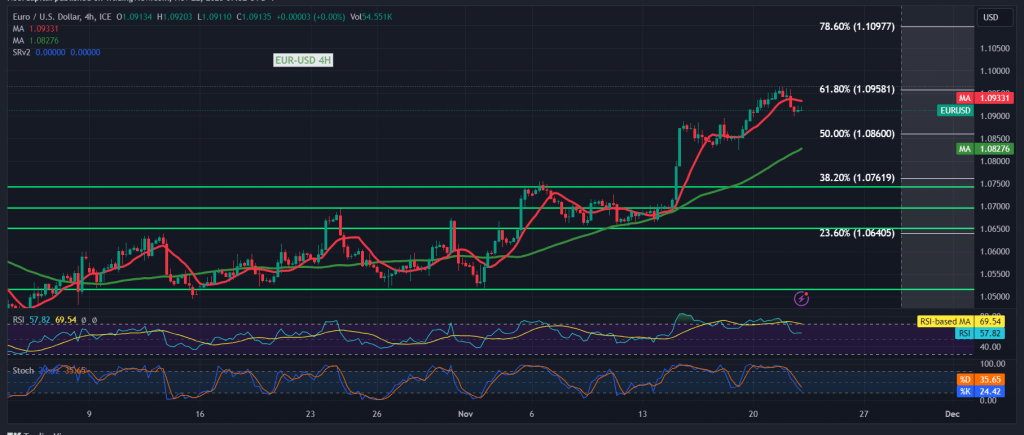The EUR/USD pair managed to secure some gains during the preceding trading session, reaching the initial target of 1.0970, representing the 61.80% Fibonacci correction and achieving its highest level at 1.0963.
From a technical standpoint today, examining the 4-hour time frame chart reveals that the 1.0960 level, corresponding to the 61.80% Fibonacci retracement, acted as a hurdle to the ongoing ascent. This compelled the pair to undergo a retest of the psychological barrier at 1.0900. Despite observable negative indicators on the Stochastic indicator, a positive inclination is maintained, grounded on intraday stability above the psychological support at 1.0900. Additionally, the pair continues to receive positive signals from the 50-day simple moving average.
Consequently, the upward bias remains valid and potent, contingent upon stable trading above 1.0900 and a subsequent breach of 1.0960. Such a breach serves as a motivating factor, heightening the likelihood of an ascent towards 1.1000 and then 1.1050, with potential targets extending further to 1.1080.
On the downside, a return to stability below 1.0860 could entirely negate the suggested bullish scenario, potentially leading the pair to retest 1.0800.
A word of caution: Today, high-impact economic data is expected from the American economy, specifically the revised reading of the Consumer Confidence Index from the University of Michigan, along with a press talk by the Governor of the Bank of Canada. Increased price fluctuation may occur as a result.
Note: Trading on CFDs involves risks. Therefore, all scenarios may be possible. This article is not a recommendation to buy or sell but rather an explanatory reading of the price movement on the chart.
| S1: |
 Noor Trends News, Technical Analysis, Educational Tools and Recommendations
Noor Trends News, Technical Analysis, Educational Tools and Recommendations

